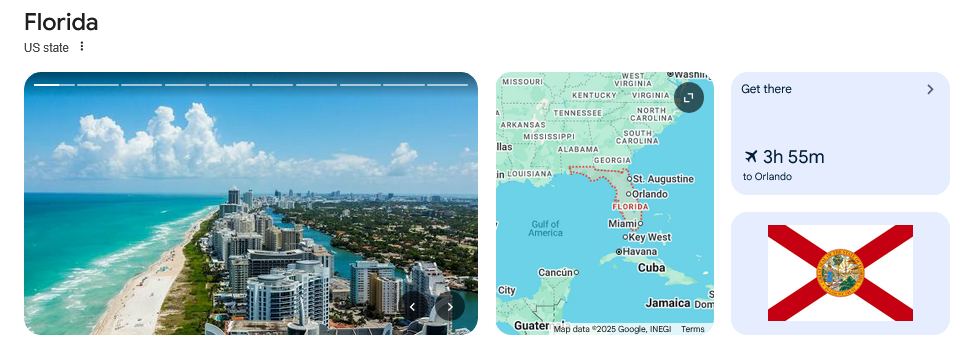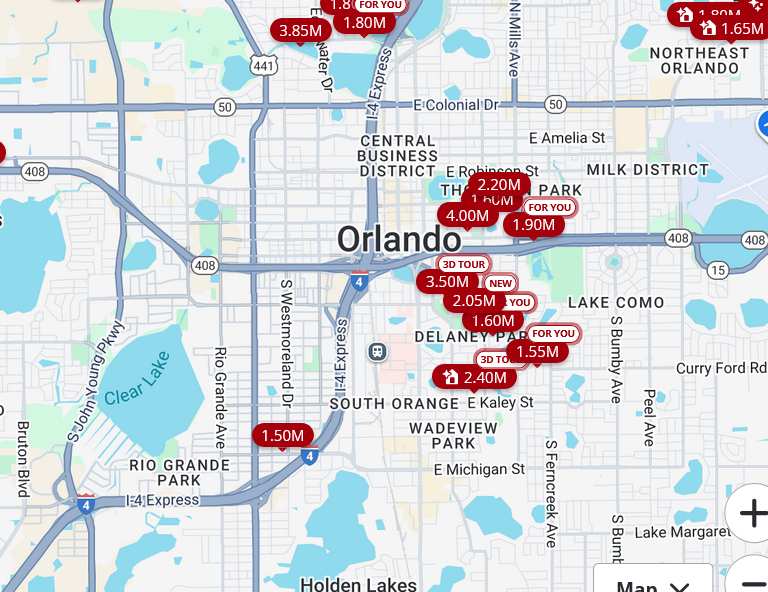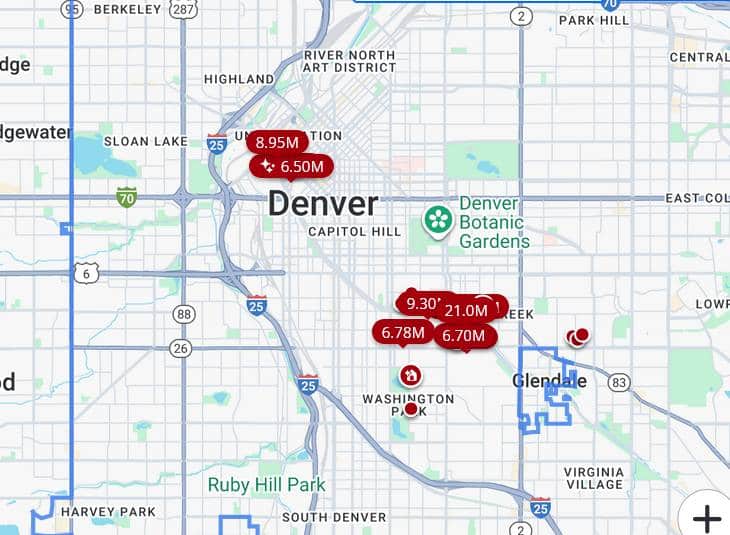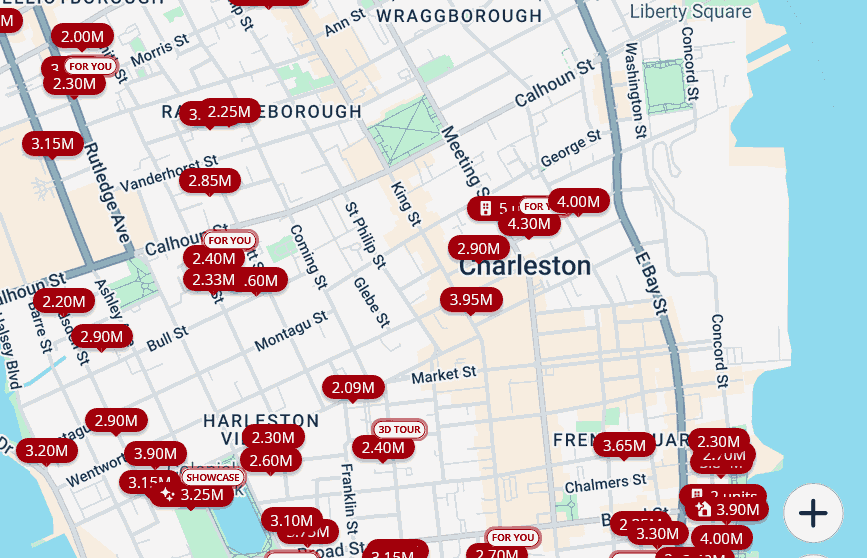Sunny Orlando has dynamic real estate, experiencing new trends every cycle due to changing demographics, shifts in demand, and various other factors. For property sellers, buyers, and investors, it pays to be aware of the developments and trends that shape this market.
In this article, we’re sharing the latest real estate statistics so you can see the bigger picture and make informed decisions moving forward.
- Homes Have a Median Value of $374,018
- Homes Stay for 63 Days on the Market
- Sale-to-list Price Is 97.94%
- Rental Rates Average $1,822 Monthly
- Vacancy Rate Is 14.61%
- Inventory Is 13,007 as of September 2025
- Mortgage Rates Have Lowered to 6.17%
- Ranks No. 17 in Highest Foreclosure Rates
- Closed Sales Are Down by 3.4% in June
1. Orlando Homes Have a Median Value of $374,018
According to the latest Zillow data, properties in Orlando have a median value of $374,018. Other sites show $380,000 to $400,000, but the overall prices hover within this range. The current value represents a dip of 4.5% compared to the same time last year.
The lower pricing has been a consistent trend as Orlando has been cooling off in the past few months. This has resulted in a buyer’s market, but some experts still believe that Orlando can shift to a more balanced market within the next few months.

2. Orlando Homes Stay for 63 Days on the Market
As of September 2025, homes have a median days on the market of 63 days. This number represents a major growing trend, with the current average being 28% larger than the same time last year. Within 2025, the fastest days on the market were slightly above 40 days, which is still hovering around the national average. Even so, the rising number further supports the idea that Orlando is a cooling market.
3. Sale-to-list Price Is 97.94%
Homes sell at a lower price than the listing price, with the ratio at 97.94%. The closer this figure is to 100% or 1.00, the more competitive the market is. At 97.94%, buyers are significantly at an advantage, having more negotiating power that allows them to ask for lower pricing. Given the long days for these properties, many sellers accept these offers to avoid the longer delays, which result in additional expenses on their end.
4. Rental Rates Average $1,822 Monthly
As of October 2025, the average rental rates for residential properties are $1,822, which is lower compared to the previous year by $18 — not a significant decrease. Even so, the trend is also going down, with more landlords assigning slightly lower prices to avoid vacancies. Even so, the current rates are still above the average national rates. Orlando is still an in-demand market for rental properties.
5. Vacancy Rate Is 14.61%
Per the latest data, Orlando has a vacancy rate of 14.61% for residential properties, which is substantially higher than the national average. While this number is concerning, we have to remember that they have seasonal demand. The houses that are inflating the vacancy rates are likely vacation homes or properties held for short-term rental use. However, for investors, more in-depth research is needed if you want to tap into the demographics that look for long-term rental properties.
6. Inventory Is 13,007 as of September 2025
The total number of Orlando properties for sale as of September 2025 is 13,007, which represents a slight drop of 2.2% from the previous month. However, the number is still growing compared to last year, and the months of supply (MOS) is now expected to reach 5.79 months. This means that Orlando is nearing a balanced market. However, the rapid shift (from four months a few quarters ago) indicates that the city is still a buyer’s market, even though an MOS of six months is usually the indicator of a balanced market.

7. Mortgage Rates Have Lowered to 6.17%
Compared to the previous months, the mortgage rates for 30-year fixed loans for Orlando properties have slightly dipped to 6.17%. This trend follows national rates, which are still hovering around the mid-6% range for the rest of 2025. Persistent inflation is still the biggest reason why mortgage interest rates remain high, but numbers are expected to dip closer to 6% by late 2026.
8. Ranks No. 17 in Highest Foreclosure Rates
Among U.S. cities with a population of at least one million, Orlando ranks as the 17th city with the highest foreclosure rates. These numbers are rising everywhere in the U.S. as more and more people are unable to keep up with mortgage payments. In places like Orlando, which have a higher cost of living than other locations, the effects of inflation and lower purchasing power are more keenly felt.
9. Closed Sales Are Down by 3.4% in June
Even though Orlando has been a buyer’s market for a few months now, sales are still trending down. June 2025 saw a drop of 3.4% compared to the same period last year. Many buyers remain cautious because of high interest rates and the economic uncertainty from the federal government’s unpredictable policies. This trend is expected to put further downward pressure on home prices as sellers increase concessions and price cuts to quickly close deals.

Andrew Draayer of Andrew The Homebuyer
Wrapping Up: Latest Real Estate Trends
Market is cooling, and various factors have led to the city being a predominantly buyer’s market. Even so, the market is never settled, and a new variable may enter that could cause major upheavals to the current trends. It’s better to regularly monitor the numbers to gain a better idea of where things are headed, helping you make more confident decisions for the long term.







